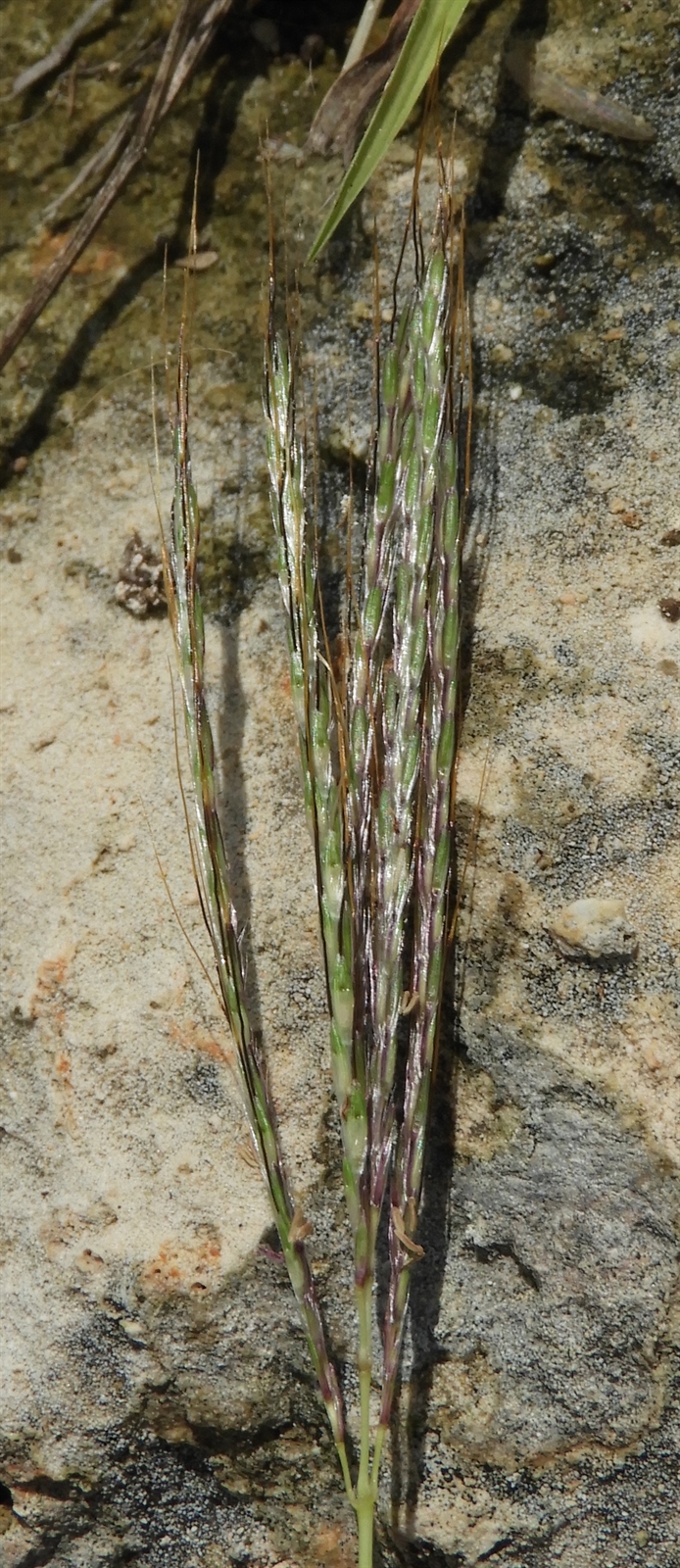Habit: Bothriochloa pertusa grows as stoloniferous perennial to 60 cm in height when flowering. The nodes are glabrous or pubescent. The leaves are arranged alternately to 30 cm in length (usually shorter) and to 5 mm wide, with a pubescent or glabrous basal sheath extending along the stem. At the point of divergence of the leaf sheath to the leaf blade is a membranous ciliate ligule. The leaves are parallel veined.
The zygomorphic flowers are arranged in digitate racemes. At the base of each spikelet are 2 structures called glumes. The first glume small and the second larger. In each spikelet there are flowering structures each is subtended by 2 additional structures (lemma and palea). The lemma extends into an awn and the palea is absent or minute. There are two florets with the lower one fertile and reduced while the upper sterile, with 3 stamens and a superior ovary each with a single locule and seed. The fertile floret with a pit/depression below the awn. The fruit is a caryopsis.
Habitat: Bothriochloa pertusa grows in Human Altered environments (farms, old fields, waste areas).
Distribution: Bothriochloa pertusa is NOT native to the Lucayan Archipelago but occurs on many islands. It is native to Asia and the Indian subcontinent but has been spread throughout the Caribbean region, the Southern United States, Mexico, and Central and northern South America.
Medicinal/Cultural/Economic usage: Bothriochloa pertusa is not known to be used medicinally in the Lucayan Archipelago.

